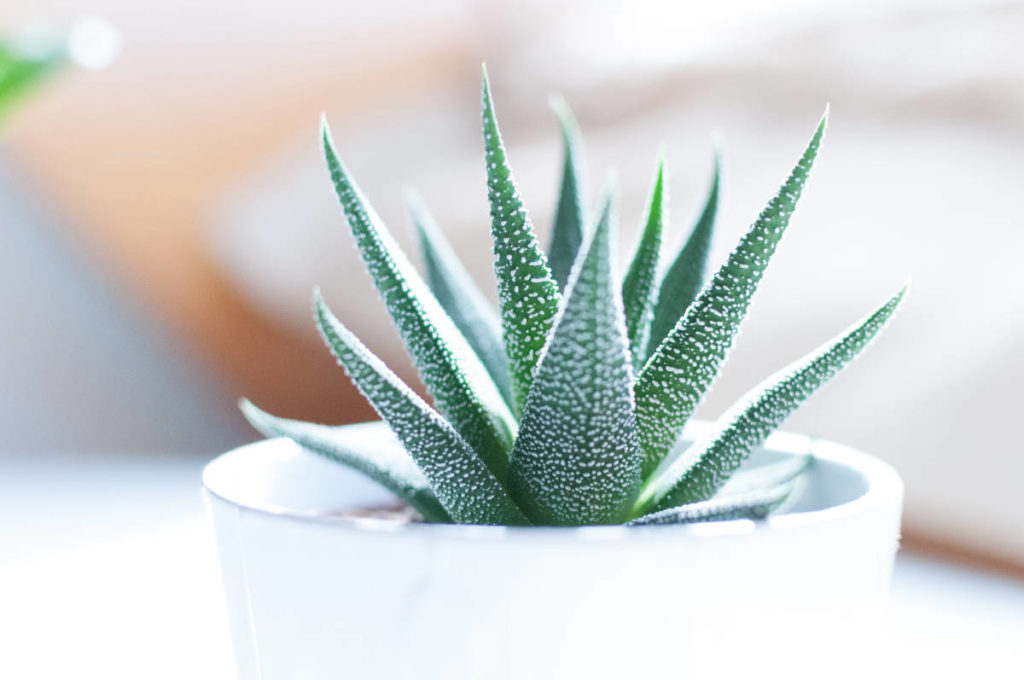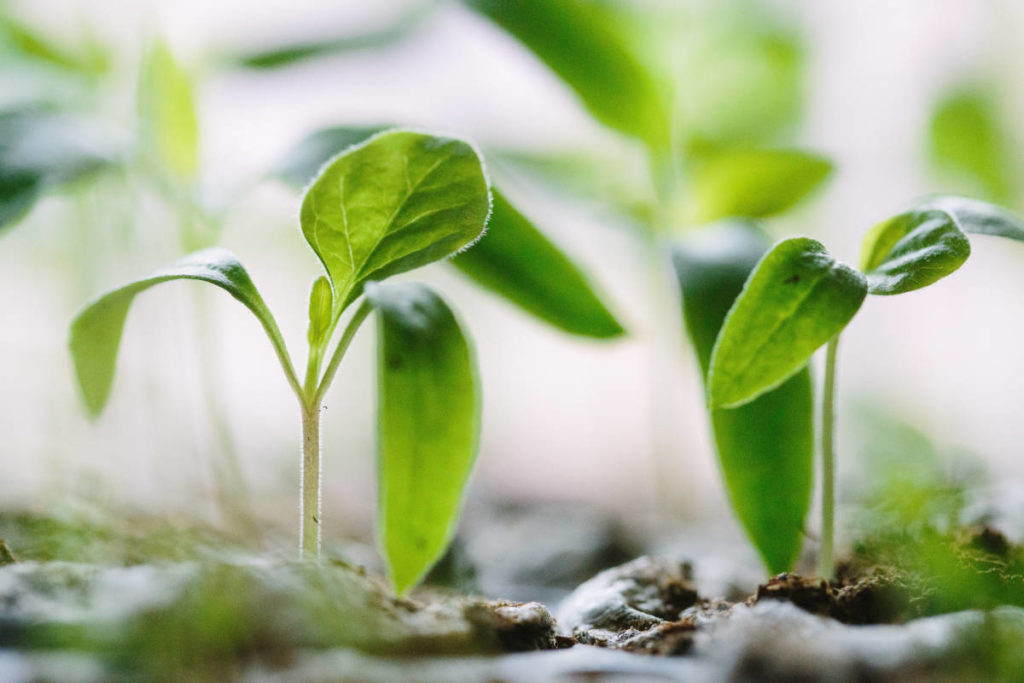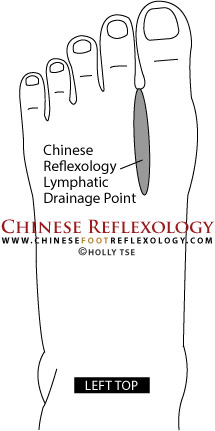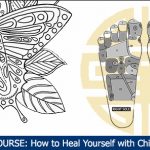Chinese Reflexology is a powerful way to get qi, life force energy, flowing through the lymphatic system. Learn reflexology points for lymphatic drainage, and get a free chart of the lymphatic system reflexology points. Plus, 3 simple tips for detoxing your body.
Have you ever wondered why doctors haven’t been able to identify a single cause for many modern diseases such as cancer, dementia, or high blood pressure? While there are known risk factors, why do some people get sick and others stay healthy? Have you ever considered that it might have something to do with toxins?
According to Traditional Chinese Medicine, many imbalances in the body are due to accumulated toxins. The lymphatic system helps your body flush out toxins, which is why I want to share with you a very powerful Chinese Reflexology point for lymphatic drainage, in addition to a reflexology lymphatic system chart that you can download for free.
I started this series of articles because there’s so much online information about health and wellness. It can be overwhelming if you try to follow it all. And because each person is different, what works for one person doesn’t work for everyone. However, I’ve identified three guiding principles for health and vitality that are beneficial for everyone. They’re easy to follow, and best of all, you can customize and adapt them based on your lifestyle and body constitution.
The first guiding principle is to keep your qi flowing.

The second guiding principle is to reduce your toxic load.
You can do this in two ways: reduce the amount of toxins your body is exposed to, and strengthen your body’s systems for flushing out toxins.
What Are Toxins?
In a nutshell, toxins are waste products or unwanted substances in the body. For example, the day-to-day functions of your body create waste products. Digesting food results in feces. When cells die, the dead cellular matter needs to get “cleaned up” and eliminated from the body.
We are also exposed to environmental toxins through the air we breathe and the food we eat. Pollution and particulate matter enter the lungs and impact the body’s functions. According to the World Health Organization, approximately 4.6 million people each year die from causes related to air pollution.
Other environmental toxins such as microplastics contain chemicals that disrupt the body’s endocrine system (hormone production), and radiation can affect the body’s cells. The long-term effects of many chemicals found in foods such as artificial flavors and colors, pesticides and herbicides, and artificial hormones and antibiotics are unknown.
Living in a modern society means we’re exposed to a lot of toxins.
It’s virtually impossible and it would be extremely stressful to avoid all toxins. We even generate our own toxins in terms of toxic energy—created by negative thoughts and feelings that we experience in stressful situations, toxic relationships, and discordant work environments.
How do you protect your body from toxins?

While it’s impossible to avoid all toxins, the good news is that our bodies are quite resilient. This doesn’t mean you can chain smoke, and throw back a half dozen shots of hard liquor without any effect. But what it does mean is that our bodies can process a certain amount of toxins because we have built in systems like the lymphatic system for flushing out toxins.
As long as your body’s capacity to flush out toxins is higher than your exposure, then the body can keep things flowing. However, a greater toxic load makes the body work harder to deal with it, and this can take a toll in the long run. For example, the liver is fully capable of metabolizing a lot of alcohol, but if it has to do this repeatedly for years, this increases a person’s risk for developing cirrhosis.
Since you can’t avoid all toxins, try to minimize the amount of toxins that you’re exposed to—physically, mentally, emotionally and energetically.
When it comes to reducing my toxic load, I try to eat organic whenever possible, but I don’t stress out about it. I don’t exclude things such as gluten, wheat, salt, red meat, or caffeine, but I do avoid artificial colors, artificial flavors, high fructose corn syrup, and hydrogenated fats.
But let’s get real…
Most of us have at least one “guilty” not-so-healthy indulgence that we love. For me, it’s sour cream and onion potato chips. I can leave chocolate on the table, but those crunchy salty chips call out my name!
The Chinese Medicine approach to food very rarely forbids foods. Instead, Chinese Medicine Food Therapy is all about balance.
In addition to physical toxins, it’s important to flush out energetic toxins such as negative emotions. Our bodies have the resilience to experience a whole spectrum of emotions, but the key is to clear negative emotions from your body as quickly as possible. For example, if a person holds onto grief, it stays “stuck” in the body and this can affect the flow of qi, one’s life force energy.
Qi needs to flow smoothly throughout your body because it helps move physical elements in the body such as blood through the circulatory system, food through the digestive system, and lymph through the lymphatic system, which helps your body to flush out toxins.
How to Reduce Your Exposure to Toxins
What I love about the second guiding principle of reducing your toxic load is that you can adapt this principle to fit your life and also include your favorite guilty indulgence! Here are three simple ways to reduce your body’s overall exposure to toxins:
1. Aim to Go Low Overall
Nobody participating in a modern society lives a “perfect” life so don’t stress out about eliminating every toxin. It’s not going to happen.
Instead, look at the total amount of toxins you’re exposed to over the course of a week. Here are a few questions to get you started:
- What are you eating and drinking?
- How much exposure do you have to pollution and chemicals?
- Are you stressed this week?
- How can you reduce your overall exposure this week?
For example, if you’re having a stressful week (emotional toxins), skip the alcoholic drinks when going out with friends on that weekend. Or make a conscious effort to carve out some me-time and prepare a healthier dinner rather than grabbing takeout.
2. Start with Small Changes
One of the biggest roadblocks to making changes, is aiming for sudden and drastic change. A lot of diets are very restrictive and leave you feeling deprived. For example, it’s hard to go from eating bread and pasta for years to eliminating gluten from your diet overnight.
And I’m not saying that you have to eliminate gluten. I personally don’t have any issues with gluten, but that’s me. Each person is different, which is why I advocate for a general principle of “reducing your toxic load.” This simplifies things because you choose what works for you.

So start small and make a few changes here and there until it feels easy and effortless. Then you can look at other ways to reduce your toxic load. With this approach, reducing toxins happens gradually and naturally over time.
For example, I’ve found my desire to eat potato chips has diminished significantly over the years without me giving it much thought. Sometimes I’ll go months without eating any, but I don’t have a sense that I’m denying myself. I’ve experienced a gradual shift to being more mindful about wanting better food to fuel my body.
Small changes add up over time, and your body will thank you because your health is a sum of every choice you make. Each small change tips the scales in your favor.
How to Support Your Lymphatic System with Chinese Reflexology
Another way to reduce your toxic load is to support your body in becoming more efficient at flushing out toxins. The lymphatic system is one of the most important systems in your body to help remove wastes and flush out toxins.
What is the Lymphatic System?
LiveScience has a pretty good easy-to-understand article explaining more about the lymphatic system.
“The lymphatic system is a network of tissues and organs that help rid the body of toxins, waste and other unwanted materials. The primary function of the lymphatic system is to transport lymph, a fluid containing infection-fighting white blood cells, throughout the body. The lymphatic system primarily consists of lymphatic vessels, which are similar to the veins and capillaries of the circulatory system. The vessels are connected to lymph nodes, where the lymph is filtered.”
In your circulatory system, the heart pumps blood through the blood vessels. But in the lymphatic system, there isn’t a pump to move lymph through the lymph vessels. The only way that lymph moves through the lymphatic system is through physical movement. That’s why the first guiding principle for health and vitality is so important. You have to move your body to keep your qi flowing!
When you sit at a desk all day, your body isn’t moving much, and as a result, neither does the lymph fluid. Over time, the lymphatic system can become sluggish and toxins and waste are not efficiently flushed out of the body.
One way to start turning things around is to improve the flow of qi through the lymphatic system because flowing qi helps move physical substances in the body. You can boost the qi in the lymphatic system by massaging the Chinese Reflexology point for lymphatic drainage.
This reflexology point correlates to the area in your chest where lymph exits the lymphatic vessels and returns to the blood vessels, and it helps get qi flowing through the lymph nodes in the breast and armpits, and the lymphatic drainage area.
How to Locate the Chinese Reflexology Point for Lymphatic Drainage

The lymphatic drainage reflexology point is located on the tops of both feet in the webbing between the big toe and second toe. This point begins at the base of the toes and continues to the area where the bones of these two toes meet. A simple way to visualize this is to think of the two bones forming a letter V. The Chinese Reflexology lymphatic drainage point goes from the base of the toes up until the point at the base of the V.
Massaging this point doesn’t take the place of physically movement and activity. However, it is a great starting point (bad pun intended) to help perk up a sluggish lymphatic system, especially when combined with the most important reflexology points for the primary organs and meridians.
One of my students saw dramatic improvement in lymphedema after she began regularly massaging the Chinese Reflexology points taught in my Sole Fundamentals course. But she was also making a conscious effort to move her body every single day.
As you massage the lymphatic drainage reflexology point and get more active, you’ll start clearing energy blocks in the lymphatic system and get your qi and lymph flowing! This point is great to use in combination with the Chinese Reflexology breast point to support breast health.
In addition to the reflexology lymphatic drainage point, there are also Chinese Reflexology points for the upper and lower lymph nodes. Check out the bottom of this webpage to learn how you can get a free Chinese Reflexology lymphatic system chart.
Technique to Massage the Lymphatic Drainage Reflexology Point
Important: Please do not massage this point if you are pregnant as it crosses over the acupressure point, Liver 3. In Chinese Medicine, Liver 3 is sometimes used to stimulate labor.
For everyone who is not pregnant, here are instructions for massaging this point:
To massage the reflexology lymphatic drainage point, use the knuckle of your index finger to press and stroke the point. Place the knuckle at the base of the toes between the big toe and second toe, and then stroke down away from the toes and towards the point of the V where the two bones meet.
When you get to the bottom of the V, lift up your knuckle, reposition it at the base of the two toes and repeat the downward stroke. It’s very important to stroke in one direction only, away from the toes, because this correlates to the flow of lymph through your body.
In terms of pressure, you want to press hard enough that you feel it, but not so hard that you bruise the area or irritate the skin. If the point is super sensitive, use a lighter pressure. I also recommend using a lubricant such as moisturizer or massage oil to reduce friction because too much friction can cause skin irritation.
How Often to Massage the Chinese Reflexology Lymphatic Drainage Point
- Do 15 downward strokes on one foot, and then repeat 15 downward strokes on the other foot.
- A good rule of thumb is to do this twice a week
- Do not massage more than 15 strokes on each foot twice a week as too much massage can irritate the skin or trigger detox symptoms if you hold a lot of toxins in your body. Also do not massage the lymphatic drainage reflexology point if you’re pregnant. As a general guideline, it is advised not to practice Chinese Reflexology if you are pregnant.
It’s important not to OVER-MASSAGE the point. Follow the given instructions for how often to massage the Chinese Reflexology lymphatic drainage point because overdoing it is not in your best interest. You can get too much reflexology, which is counterproductive to healing.
In order to restore balance in your body,
you need to take a balanced approach.
Detoxing also involves letting go of thoughts and behaviors (e.g. overdoing it, pushing yourself too hard, wanting to “fix” yourself) that don’t support your health and well-being. The Chinese Reflexology point for lymphatic drainage helps improve the flow of qi through the lymphatic drainage area, but remember to keep the big picture in mind.

Get a FREE Chinese Reflexology Lymphatic System Chart

Fill out the form below to get a FREE Quick Reference chart of the Chinese Reflexology lymphatic system points.
Can’t see the form? Click here.
After submitting the form, you’ll be emailed a link to instantly download the reflexology lymphatic system chart. Plus, you’ll also receive a Chinese Reflexology foot chart, a free mini course on Chinese Reflexology, and my complimentary monthly newsletter. It’s a great way to learn reflexology points for the lymphatic system, and also a fun way to discover self-healing tips and techniques for the body, mind, heart, and spirit.



